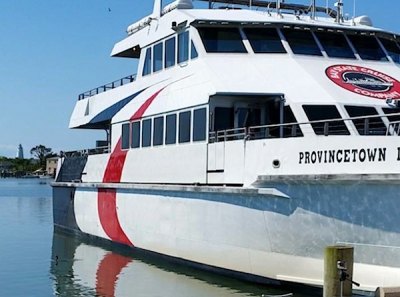Ferry Charts New Course to Ocracoke

The people who live on the Outer Banks don't need anyone to tell them Hatteras Inlet's width is growing. Old timers here will tell you the distance between Hatteras and Ocracoke Islands used to be the length of a good tee shot. Now, the inlet separating the two coastal enclaves is nearly two miles wide. Hurricane Isabel seemed to kickstart the process in 2003. Hurricane Irene in 2011 made it worse.
For the North Carolina Department of Transportation's Ferry System, the widening inlet created shoaling that clogged the channel its car ferries traditionally used to carry hundreds of thousands people and vehicles between the two islands every year. Despite repeated attempts by the Army Corps of Engineers to keep the channel open, its dredging efforts weren't enough. In December 2013, the Ferry Division determined the route was no longer safe, and switched to a longer, more stable route that extended further into Pamlico Sound.
Despite its safety and stability, the new route led to new problems. Significantly higher fuel costs. Fewer scheduled departures in the busy summer season. Longer lines. Frustrated residents and visitors.
"Right now, we have a major congestion problem at Hatteras," says North Carolina Ferry Division Director Ed Goodwin. "Day trippers are turning around rather than waiting for hours to board a ferry. Because of that, fewer people are visiting Ocracoke. We have to do something."
That "something" could come in the form of the M/V Provincetown III, which arrived on the Outer Banks May 1 and was opened to the public for tours May 4-5. The ship, a 149-passenger catamaran-type ferry, is making several test runs between the islands, in what could be a prelude to supplementing the current fleet of car ferries with passenger-only ferry service between Hatteras and Ocracoke's Silver Lake Harbor, right in the heart of Ocracoke Village. "The idea is that passengers would be taken straight into the village, where they wouldn't necessarily need their cars," says Ferry Division Assistant Director Jed Dixon. "If we could bring more people to Ocracoke in fewer vehicles, it would be a win-win for the Ferry System and for the people and businesses of Ocracoke."
The visit from the Provincetown III, which is on the way from its winter home in the Caribbean to its summer job ferrying passengers between Boston and Provincetown, Massachusetts, is part of a feasibility study on passenger ferry service and other alternatives to alleviate the Hatteras congestion. The North Carolina Department of Transportation contracted with transportation consulting firm Volkert to conduct the study, which is set to be completed by the end of 2015.
"We'll be asking all the tough questions," says Will Letchworth, a transportation engineer and Volkert's project manager. "Will day trippers be willing to part with their cars? Where can they park in Hatteras? How many passenger ferries would we need and what size should they be? Would there need to be transit options in Ocracoke? What kind of docks would need to be built? Would continuous dredging in Hatteras Inlet be feasible? There are a lot of differing opinions out there, and we will be listening to all of them."
One thing everyone agrees on is that something needs to be done soon. Visitation to Ocracoke, accessible only by boat or private plane, dropped by 20 percent after the ferries started using the longer route. "Ocracoke's economy can't take any more hits," says Hyde County Manager Bill Rich. "Tourists are the lifeblood of this island, and ferries are the only way we have to get them here. One way or another, we need to get our visitors back."
For now, the Ferry Division is strongly encouraging this summer's travelers to take their Ocracoke trips in off-peak hours, hoping to move the needle enough to alleviate the longest wait times. But everyone knows it's only a temporary fix.
And like the land that used to bridge the distance between Hatteras and Ocracoke Islands, the time for a more permanent solution is quickly disappearing.



